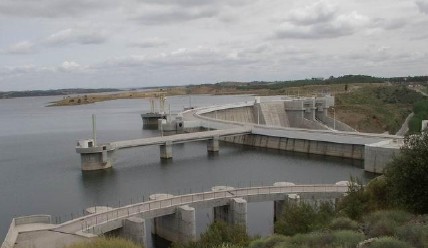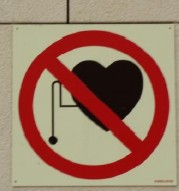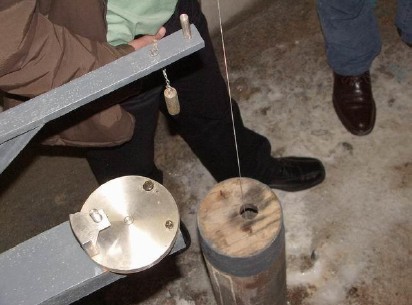A Report on the Joint Symposium “Measuring the Changes” of
the FIG 13th Symposium on Deformation Measurement and Analysis and the IAG
4th Symposium on Geodesy for Geotechnical and Structural Engineering
Lisbon, Portugal, 12-15 May 2008
|
 |
The second jointly held symposium on deformation measurements and
analysis was held May 12 – 15, 2008 in Lisbon, Portugal. The symposium was a
combined meeting of the FIG Commission 6, Working Group 6.1, Deformation
Measurements and Analysis (13th FIG Symposium on Deformation Measurement and
Analysis) and the IAG Sub-commission 4.2, Applications of Geodesy in
Engineering (4th IAG Symposium on Geodesy for Geotechnical and Structural
Engineering). The theme of the symposium “Measuring the Changes”,
reflects the importance, and demand, for fully automated, continuous, and
reliable deformation monitoring in the civil engineering, mining, and energy
sectors. In addition there is a strong trend to incorporate deformation
systems into new structures from the very beginning, driven by concerns for
whole-of-life structural health monitoring. Automation, multi-sensor
integration, continuous data collection, integrated analysis and physical
interpretation, and enhanced accuracy and reliability are the key
developments in new monitoring systems. These issues are the subject of
studies of these two international working groups.
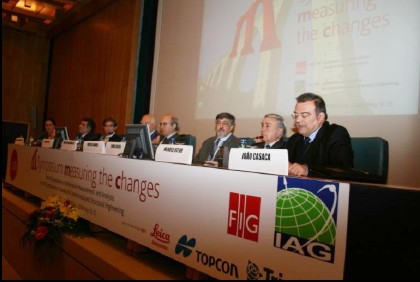
The symposium was attended by about 160 (unofficial count) delegates from
30 countries. Maria Joao Henriques and her colleagues from
Laboratorio Nacional de Engenharia Civil (LNEC), EDP Producao and several
local organizations did a wonderful job of organizing the symposium and
events, and the meeting was a great success. (Information about the
symposium can be found at the official site of the organizers:
http://measuringchanges.lnec.pt
and proceedings at: www.fig.net/commission6/lisbon_2008).

The symposium had 20 technical sessions with topics ranging from modeling
(4 sessions), monitoring of structures (3), GNSS (2), geodeformations (2),
radar (2), equipment (2), laser scanning, engineering geodesy,
multi-techniques and poster papers (2). In addition, there was a special
session for those interested in fiber optic sensors hosted by the FIG WG 6.4
(Engineering Surveys for Construction Works and Structural Engineering) task
force on fiber optic sensors. Keynote presentations by each chair of the two
organizations started off the symposium and were followed by many excellent
presentations and poster papers throughout the event.
There was also great participation by supporting vendors in the
exhibitor’s session. There were exhibits from Leica Geosystems, Sokkia
Europe, Topcon, Fiber Sensing, Emilio de Azevedo Campos and Measurand
Geotechnical. These exhibitors were very active participants with all types
of equipment demonstrations taking place inside and outside of the symposium
event hall. Many attendees received personalized and hands-on experience
with the equipment.
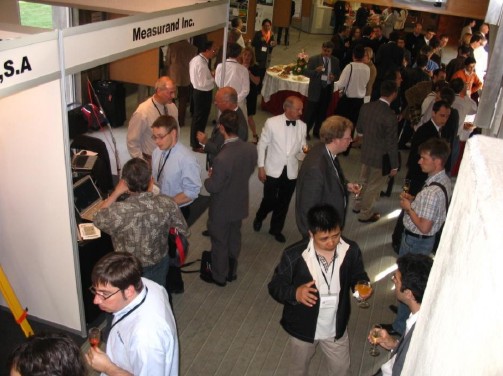
Another aspect of the symposium is the great support the organizing
committee received from the vendors to help sponsor this event. The vendors
that sponsored the symposium at the platinum level were Leica Geosystems,
Topcon and Trimble. At the silver level, support was received from GAUSS,
SPGO, Portuguese Geographic Institute, Sokkia Europe, Sol Data Iberia and
Technasol FGE. The organizers and chairs of the symposium sincerely express
their appreciation for the support these organizations provide for these
meetings to take place.
It is also important to stress that several organizations provided
financial support for 7 young colleagues to attend the symposium. The grants
were supported by: IAG: 3 (fees and accommodation), TOPCON: 1 (fees and
accommodation), Ordem dos Engenheiros (Engineers Association of Portugal): 3
(fees only because they lived in Lisbon area). We sincerely thank these
contributors for their support of our future leaders.
No symposium is complete without a social event to “loosen up” the
attendees for a night of mingling and making new friends and connections.
The LNEC provided a wonderful evening of fun by hosting a dinner at the
Lusitania Horse Training Center. The evening started with a show of the
horse’s skill in historic battlefield maneuvers and was followed by an
excellent dinner with a show of the traditional Portuguese fado music.
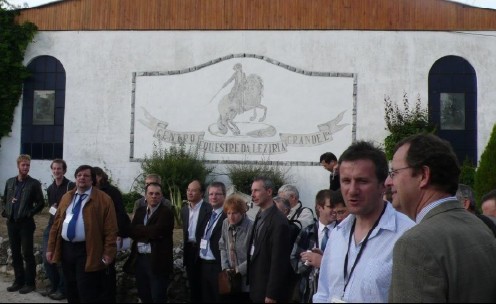 |
 |
The first morning of the symposium coincided with the devastating
earthquake in China. The symposium participants prepared a condolence letter
for the victims of the Chengdu earthquake to express their sadness and
solidarity with the peoples of Sichuan Province. To show further support, at
the closing session, discussion was held regarding holding the next
symposium in mainland China. Canada and Hong Kong were also offered as
possible venues. The proposers of these locations are tasked with submitting
a proposal to Adam Chrzanowski (chair FIG WG 6.1) and Chris Rizos
(vice president IAG) for consideration. Proposals should address topics like
local and international travel to site, hotel accommodations, conference
facilities, cost to participants and local appeal.
The day after the symposium end was a “not-for-the-faint-of-heart”
technical field trip to visit Alqueva Dam and the three Alamos Dams. This
trip provided attendees the opportunity to observe the Portugal countryside
and to see the issues that Portuguese dam engineers and surveyors face close
up. Bad weather shortened the visits somewhat but everyone enjoyed a short
detour to the ocean at Miradouro dos Capuchos on the way home.
One of the action items from the closing session was to provide a web
site specifically for deformation topics, which would include the past
proceedings and other related documents. While this is not accomplished yet,
links for the proceedings for all the past events with digital proceedings
can be seen below. The majority of the proceedings are at this general link
http://www.fig.net/commission6/reports/reports.htm, with specific links
as below. The Lisbon proceedings will be added in the near future. The
purpose of the web site will be to disseminate information on deformation
topics to all interested parties. Thought was also given to the possibility
of adding a user thread to aid interaction and discussion. These items are
hoped to be accomplished in the near future.
All registered attendees have been added to the Working Group 6.1 email
list. This email list is used to disseminate information on FIG and IAG
events and newsletters. Others interested in joining this distribution list
may contact Cecilia Whitaker at cwhitaker@mwdh2o.com.
Read more:
Past Proceedings:
Adam Chrzanowski, Canadian Centre for Geodetic Engineering,
University of New Brunswick, Canada
Chris Rizos, School of Surveying & Spatial Information Systems,
University of New South Wales, Australia
Maria Joao Henriques, Laboratorio Nacional de Engenharia Civil
(LNEC), Portugal
Cecilia Whitaker, Metropolitan Water District of Southern California,
USA
June 2008 |





























